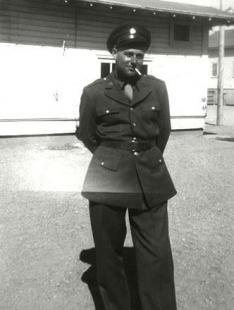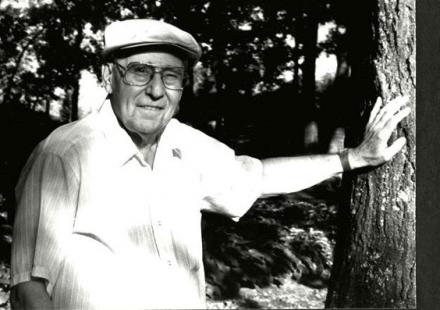Vernon C. Rathe
Era: World War II
Military Branch: Army


Vernon A. Rathe served during World War II. He was inducted into the Army on March 16, 1944. He served in the Ardennes, the Rhineland, and Central Europe.
Mr. Rathe was a Corporal and a message center clerk with Company L, 423rd Infantry Regiment. He was wounded in action on Dec. 19, 1944. He was discharged on Nov. 18, 1945.
Mr. Rathe was decorated with the following: Purple Heart, Combat Infantryman Badge, Distinguished Unit Citation, Good Conduct Medal, European-African-Middle East Campaign Service Medal with 3 bronze battle stars, American Campaign Service Medal, World War II Victory Medal.
The following are some of Mr. Rathe's recollections from the war:
"I was trained to be a Signal Corps replacement but, due to a surplus, was transferred into an infantry division and went overseas.
"During a fierce battle against tanks and German troops I was wounded twice and unable to continue. I was captured hours later by the enemy and trucked with GI and German wounded to a field hospital for emergency surgery, then to a large hospital and isolated on top floor with eighteeen other GIs.
"Building bombed . . . beds covered with glass, bricks, and plaster. No heat, electricity, or water. Guards brought pot of potato soup and water daily for two weeks. Bombs hit again. Taken to POW hospital and more surgery. We were given discarded GI clothing and started on a forced march to avoid the American advance--over 200 POWs. Only food was Red Cross parcels and black bread.
"After two days, three of us planned an escape. After dark we avoided the guards and headed west. Found an empty barn to rest in during the day.
"A barking dog and a farmer with a shotgun entered. Ron, a four-year POW, spoke German. A wide river was a half-mile away, and no way for us to get across. The banks were patrolled and bridges guarded. We would be shot. Our only hope was to rejoin the column. [The farmer's] wife and daughter were wonderful people. We set out two days later. [The farmer] and his shotgun came with us until we sighted the column. Ten days later we were in Moosberg, near the Austrian border."
Source: Hometown Heroes: The St. Louis County World War II Project. 263.

